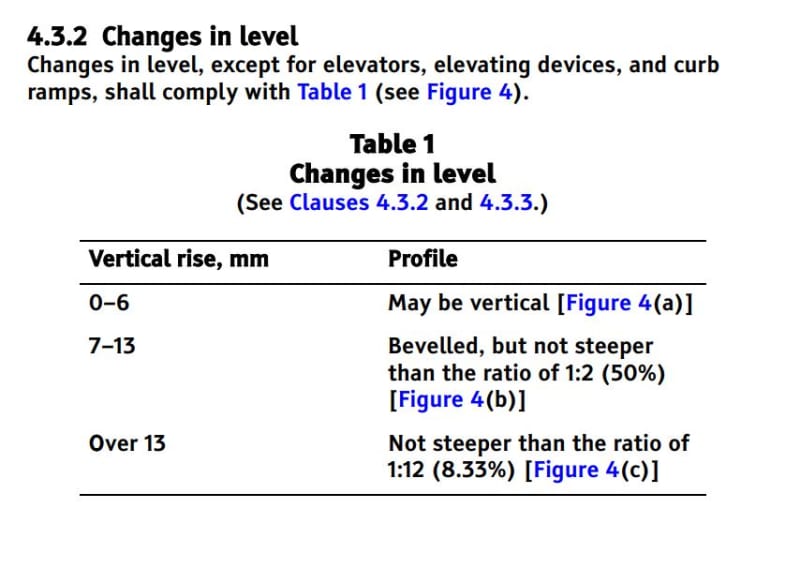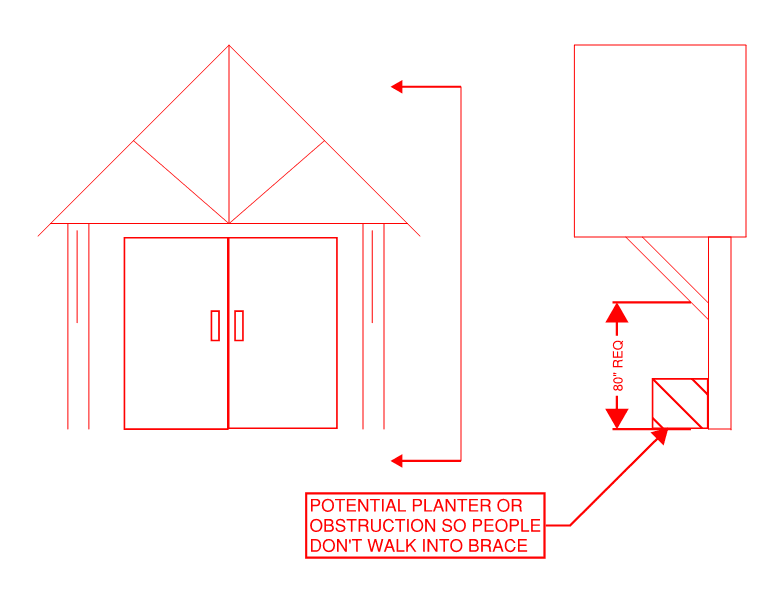JDV22
Structural
- Nov 4, 2019
- 17
Hello!
I am currently looking for information pertaining to tripping hazards, specifically how tall an obstruction can be before it is no longer considered a tripping hazard. I have seen plenty of information showing that a 3/8" or 1/2" deviation in the walking surface constitutes a tripping hazard, but what I would like to know is at what minimum height, something is no longer a tripping hazard.
Logic would state that I could safely assume 42", which is standard guardrail height, but my client would like to put planters down to prevent pedestrians from walking through a specific area.
The client put a canopy over top of an entry way, and now there are braces within 80" of the ground (head height clearance issue). He'd like to put planters directly under the braces, so that it is not a potential walkway, and therefor does not need to meet the 80" head clearance. What I am looking for is some sort of code reference or piece of information where I can tell him that he can fasten down 18" tall planters for example, and be able to make the assumption that nobody will walk under the brace because of the obstruction in the path.
Thanks for any help or insight!
I am currently looking for information pertaining to tripping hazards, specifically how tall an obstruction can be before it is no longer considered a tripping hazard. I have seen plenty of information showing that a 3/8" or 1/2" deviation in the walking surface constitutes a tripping hazard, but what I would like to know is at what minimum height, something is no longer a tripping hazard.
Logic would state that I could safely assume 42", which is standard guardrail height, but my client would like to put planters down to prevent pedestrians from walking through a specific area.
The client put a canopy over top of an entry way, and now there are braces within 80" of the ground (head height clearance issue). He'd like to put planters directly under the braces, so that it is not a potential walkway, and therefor does not need to meet the 80" head clearance. What I am looking for is some sort of code reference or piece of information where I can tell him that he can fasten down 18" tall planters for example, and be able to make the assumption that nobody will walk under the brace because of the obstruction in the path.
Thanks for any help or insight!


